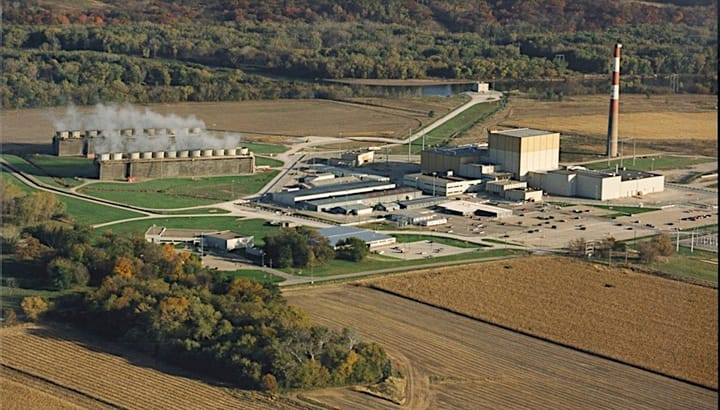The End of Human Consulting?
Will AI replace human consultants with embedded, always-on strategy systems—transforming consulting from a profession into autonomous enterprise software?

The Operating System That Will Replace the Consulting Firm
For more than a century, the consulting profession has been a cornerstone of institutional decision-making. It offered a promise: that elite human intellect, organized into firms, could bring clarity to complexity. McKinsey & Company, along with its peers, institutionalized this idea—transforming bespoke judgment into an industrialized craft. Firms dispatched their brightest thinkers into boardrooms, armed with slide decks, structured frameworks, and the implicit assurance that insight required a human guide.
But the consulting model—episodic, high-cost, and human-dependent—is increasingly out of sync with the structural tempo of the modern world. The very same pressures that made consulting indispensable in the twentieth century now threaten its relevance in the twenty-first. As artificial intelligence advances from predictive analytics into reasoning systems, the central functions of consulting are being absorbed by machines. This shift is not theoretical. It is already underway—quietly, pervasively, and at scale.
What emerges in its wake is not an upgraded toolset, but an entirely new substrate: an autonomous strategic operating system embedded inside the enterprise. And unlike the firms it is displacing, it is not constrained by billable hours, human bandwidth, or episodic engagement. It is persistent, structural, and profoundly disruptive.
The consulting firm model is built on a few core assumptions: that insight is rare, that humans are the exclusive agents of high-order reasoning, and that strategic value is best delivered through episodic intervention. These assumptions have historically been valid, but they carry limitations. Firms operate through friction: multi-week discovery phases, proprietary frameworks applied anew with each engagement, and costly reinvention across client contexts.
Human judgment, while invaluable, is bounded. Context must be relearned. Teams rotate. Institutional knowledge dissipates. The most precious resource—attention—is not scalable. The output, while often brilliant, is not always enduring. Decks gather digital dust. Implementation stalls. The firm departs, and the cycle begins anew.
This is not a critique of the people. It is a recognition of structural inefficiency. And it is precisely the kind of inefficiency that machines are built to eliminate.
The Rise of Autonomous Strategic Systems
Recent breakthroughs in large language models, retrieval-augmented generation (RAG), simulation engines, and organizational knowledge graphs have created a new class of systems capable of strategic cognition. These systems do not merely analyze data. They interpret it. They reason across it. They generate recommendations, simulate outcomes, and adjust their logic based on results.
Their capabilities include:
- Ingesting and structuring data across documents, communications, processes, and systems
- Diagnosing inefficiencies and causal relationships using logic chains and inference models
- Simulating future states based on both historical and hypothetical variables
- Generating implementation roadmaps, compliance pathways, KPIs, and OKRs
- Continuously learning from executional outcomes to refine future recommendations
These systems do not replace human domain experts. They replace the workflows of human strategists. And they do so without onboarding cycles, memory loss, or fatigue. They operate as embedded intelligence layers within the enterprise—continuous, context-aware, and capable of executing strategy as a living function, not a one-time deliverable.
Traditional consulting is episodic. It enters, diagnoses, recommends, and exits. The firm relies on the separation of diagnosis and execution. But autonomous systems collapse that distinction. They are always on. They live inside the decision loop. Strategy becomes endogenous—not something brought in, but something that emerges organically from within the system.
This is a profound reordering. It redefines strategy as infrastructure. Instead of relying on external insight at intervals, organizations now possess internal systems that analyze, adjust, and act in real time. The result is a shift from point-in-time advice to continuous, dynamic guidance. From the partner model to the platform model.
Implications for Institutions
Institutions that adopt autonomous strategic systems gain significant structural advantages:
- Speed: Decision cycles compress from weeks to seconds.
- Continuity: Organizational memory becomes machine-readable and persistent.
- Adaptability: Strategies evolve in response to real-time signals.
- Cost: Fixed consulting fees are replaced by scalable, usage-based computation.
The firms that lag in this transition are not just less efficient—they become structurally outmatched. Not because their people are less talented, but because their strategic cognition is slower, brittle, and decoupled from execution.
Consulting, as a human profession, begins to lose its comparative advantage. So what happens to the consulting firm in this landscape?
- Cannibalization: Firms that deploy these systems internally face a dilemma: embrace automation and risk eroding their own revenue base, or resist and become obsolete.
- Disintermediation: Clients no longer need to "ask the firm." They ask the system.
- Commoditization: Human insights, unless coupled with proprietary execution capabilities, risk becoming undifferentiated.
- Reinvention: The only sustainable path forward may be to own the system itself—as designers, curators, and ethical stewards of machine-based strategy.
Firms that attempt to preserve the traditional model by sprinkling AI into existing workflows will be overtaken by those who recognize this as a full-stack reinvention. Strategy is not becoming more digital. It is becoming synthetic.
This is not the end of expertise. But it is the end of a particular instantiation of it.
The future role of the human strategist is upstream and architectural. Instead of conducting the analysis, they will design the systems that do. Instead of delivering slide decks, they will encode strategy as logic, parameters, and guardrails. Instead of presenting to leadership, they will train the interfaces through which leadership converses with their organization’s brain.
In this model, human value does not diminish. It transforms. From advisor to architect. From analyst to orchestrator.
Comparative Matrix: Human vs. Autonomous Systems
|
Traditional
Consulting Function |
AI System
Equivalent |
Enabling
Technology |
|
Needs
Assessment |
Organizational
Data Ingestion |
RAG +
Semantic Indexing |
|
Process
Mapping |
Logic-Based
Causal Networks |
Graph
Databases + LLMs |
|
Scenario
Planning |
Simulation
& Tradeoff Engines |
Multi-agent
Modeling + AI Planning |
|
Strategy Deck
Creation |
Dynamic
Recommendation Engines |
Natural
Language Generation |
|
KPI
Forecasting & Tracking |
Continuous
Performance Monitoring |
Autonomous
Metrics Agents |
|
Post-Engagement
Support |
Embedded
Systemic Feedback Loops |
Reinforcement
Learning + APIs |
This comparison is not speculative. Many of these systems are in production today. Their capabilities improve monthly. And their adoption curve, like most digital technologies, follows an S-curve: slowly at first, then all at once.
A Quiet Reckoning
Many in the consulting profession do not yet feel this disruption. That is by design. Early adopters tend to be institutional, not vocal. But behind closed doors, firms are already fielding questions from clients about strategic OS licensing, AI-assisted delivery models, and the automation of advisory workflows.
The reckoning will not be announced. It will arrive as clients quietly reallocate budgets—away from partner hours and toward embedded cognition. What happened to travel agents, research librarians, and human portfolio managers is now arriving at the partner level. Not because the work lacks value. But because the medium has changed.
The traditional consulting model—opaque processes, time-intensive cycles, and human-dependent engagement—is no longer inevitable. A new strategic substrate is emerging: one that is transparent, adaptive, and embedded within the enterprise.
This is not a future trend. It is a current disruption. Firms that continue to treat AI as an augmentation tool will find themselves displaced by those who treat it as a foundation. Those who fail to own the operating system will soon serve those who do.
The real shift is not technological. It is structural. Consulting is no longer a profession. It is becoming an interface. And the question for firms is not whether they will use the new system. It is whether they will build it, license it, or be replaced by it.
The operating system always wins. The only question is who owns the code.


